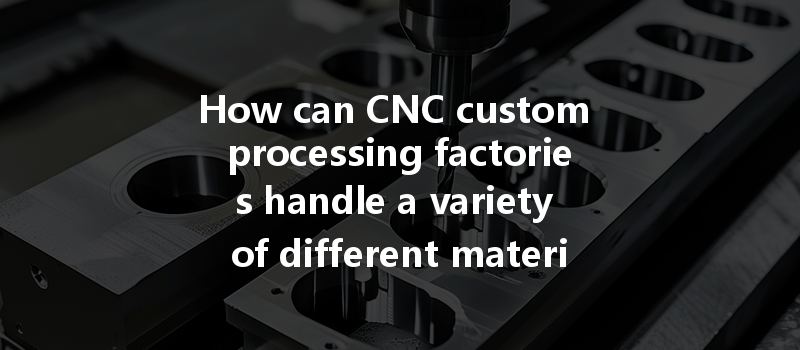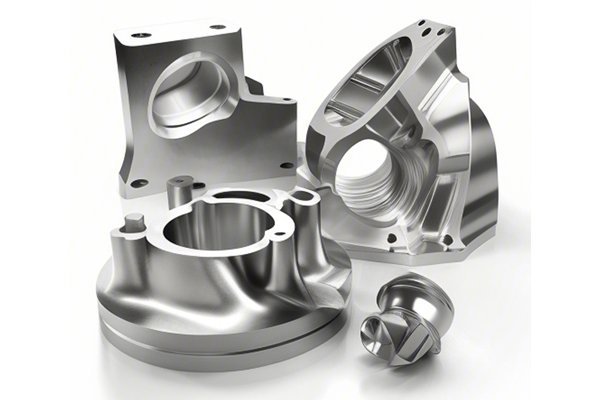Have you ever wondered how manufacturers can produce intricate components from materials as diverse as titanium, polycarbonate, brass, and even wood? The answer lies in a complex and highly specialized process known as CNC (Computer Numerical Control) machining, a technology that revolutionizes traditional manufacturing. In this blog, we’ll explore how CNC custom processing factories effectively handle a multitude of materials, delve deep into the techniques used, and provide comprehensive insights for both industry professionals and enthusiasts alike.
Understanding CNC Machining
CNC machining is an advanced manufacturing process that utilizes computer software to control machine tools. This includes drilling, turning, milling, and more. The significant advantage of CNC over traditional machining is its ability to produce high-precision parts rapidly and efficiently, making it an essential component in industries ranging from aerospace to medical devices.
Key Benefits of CNC Machining
The Challenge of Material Diversity
While CNC machining offers numerous advantages, handling a variety of different materials presents its own set of challenges. Different materials possess unique properties—such as hardness, melting points, machinability, and chemical resistance—that can significantly impact the CNC process.
Factors Influencing Material Selection
Before diving into how CNC factories handle different materials, let’s consider some critical factors manufacturers examine when selecting materials for CNC machining:
How CNC Machining Works for Different Materials
Now, let’s take a closer look at how CNC custom processing factories effectively manage to handle a variety of materials. We will break this down by material type and discuss specific techniques and considerations for each.
Metals: The Backbone of CNC Machining
Aluminum is favored in CNC machining for its excellent machinability and weight-to-strength ratio. The steps to effectively machine aluminum include:
Titanium presents challenges due to its hardness and tendency to work-harden. Techniques include:
Commonly used for its corrosion resistance, machining stainless steel can involve:
Brass is often chosen for its machinability and low friction bearings. Considerations include:
Plastics: The Versatile Option

CNC machining of plastics like polycarbonate or PMMA poses unique challenges:
Composites and Special Materials
Composites present distinct advantages in various applications; however, they can complicate machining due to their layered nature. Key practices include:
Machining ceramics requires specialized tools and techniques because of their brittleness. Considerations involve:
Wood and Derived Materials
CNC machining is also widely used in woodworking:
Approaches to Overcoming CNC Machining Challenges
Recognizing potential issues and implementing solutions is key to successful CNC machining of multiple materials. Here are some strategies widely used in the industry:
Conducting preliminary tests on material samples helps manufacturers understand how each behaves under specific machining conditions, enabling better planning and execution.
CNC systems allow for precise control of speeds and feeds. Implementing adaptive control based on the material ensures that the machining process continues smoothly without causing damage or excessive wear.
Post-machining inspection techniques—like dimensional tolerance checks, surface finish evaluation, and hardness testing—are crucial to ensuring parts meet required specifications.
Keeping operators updated on new materials, tools, and techniques is vital for maintaining high-quality standards.
Integrating technologies such as automated tool changers, in-process measurement systems, and sophisticated software can significantly enhance the efficiency and effectiveness of CNC operations.
The versatility of CNC machining lies in its ability to handle a wide range of materials, from metals and plastics to composites and wood. How CNC custom processing factories manage this complexity directly impacts manufacturing efficiency and product quality. By understanding the intricacies of material properties, employing the right techniques, and continually adapting to innovations in technology, manufacturers can ensure successful machining outcomes.
As industries evolve, so do the applications and materials we work with. Recognizing the importance of material diversity in CNC machining not only impacts production quality but also drives innovation in design and manufacturing methodologies. Whether you are an industry professional, a student, or simply curious about the process, considering this multifaceted aspect of CNC machining opens exciting possibilities for future advancements in manufacturing technology.






